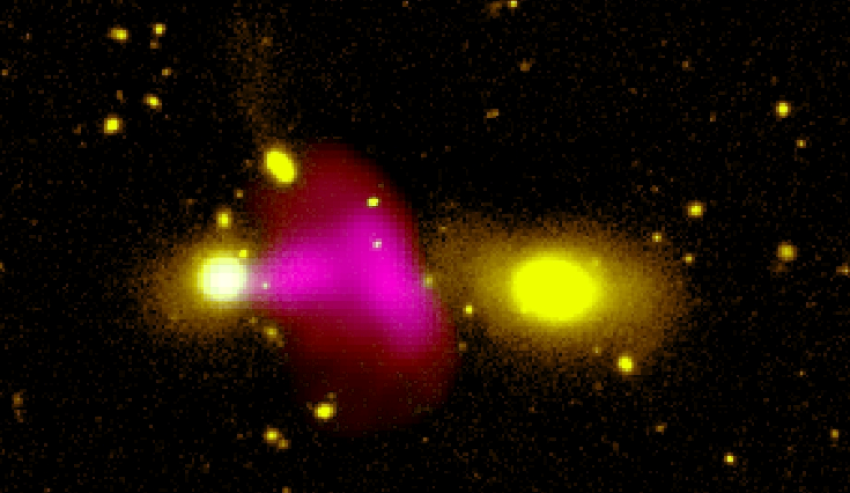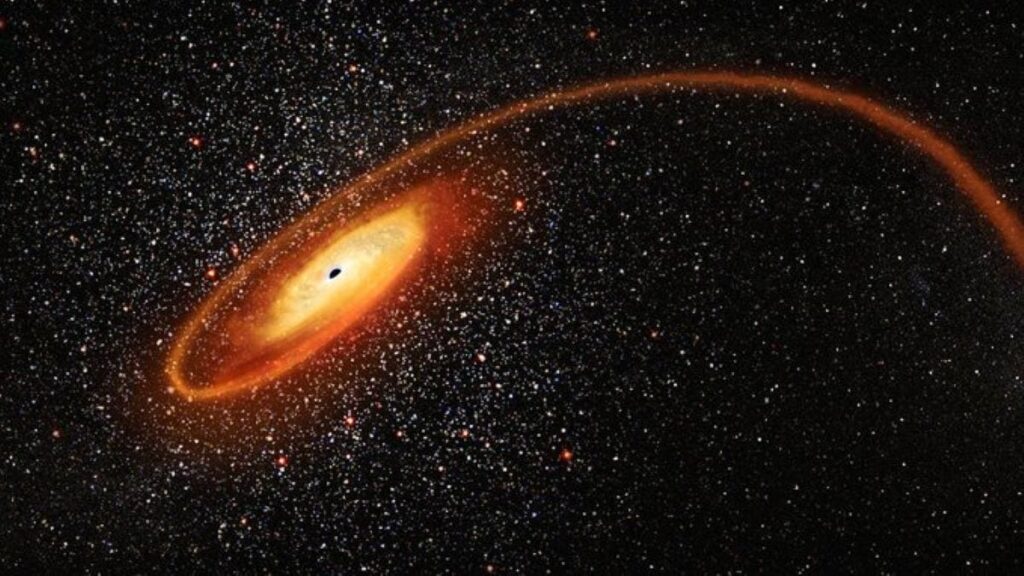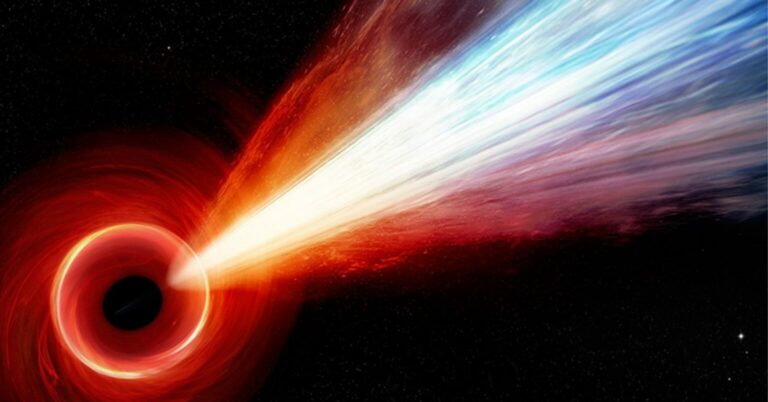Scientists baffled after finding a black hole firing a jet at a neighboring galaxy
In addition to discovering the first evidence of a black hole shooting a jet at another galaxy, scientists have also discovered that jets appear in pairs. This black hole is singular.
Citizen scientists assisted astronomers in the discovery of a rare black hole shooting an explosive jet at another galaxy. A black hole is located around one billion light-years from Earth in the galaxy RAD12.
Galaxies may be split into two primary types based on their morphology: spiral galaxies and elliptical galaxies. There is an abundance of cold gas and dust in spiral arms that seem optically blue. At an annual pace of one Sun-like star, spiral galaxies produce one new star annually on average. In contrast, elliptical galaxies are yellow and lack distinguishing characteristics like as spiral arms.
An enigma in outer space
Rarely do elliptical galaxies contribute to star creation. Astronomers are still unsure as to why they have not been producing new stars for billions of years. The perpetrators appear to be enormous or supermassive black holes. By emitting huge jets, these “monster” black holes deplete the cool gas and dust required for future star formation.
In 2013, optical data from the Sloan Digital Sky Survey (SDSS) and radio data from the Very Large Array (FIRST) were utilized to examine RAD12. Follow-up observations with the Giant Meterwave Radio Telescope in India were necessary to establish its unusual nature. The jet from RAD12’s black hole appears to be directed solely at RAD12-B. Nevertheless, jets are ejected in pairs at relativistic speeds and in opposing directions. Astronomers are perplexed as to why only one jet has been spotted emanating from RAD12.

Unlike anything we have previously seen
Seen emanating from the core of RAD12 is a conical stem of youthful plasma that stretches well beyond the visible stars. In the multicolored picture of the GMRT, the fainter and older plasma extends considerably beyond the center conical stem like a mushroom cap. The structure spans more than 440 million light-years, which is significantly longer than the host galaxy.
Never before has a jet been witnessed colliding with a massive galaxy like RAD12-B. This is the reason why RAD12 is unlike anything we have encountered previously. In the future, elliptical galaxies may lack the cool gas required to produce new stars as a result of such interactions.
Citizen science
Dr. Ananda Hota, the study’s principal researcher, explains that the discovery of a unique system improves our understanding of how radio jet feedback influences star formation in galaxies during collisions. Strong evidence suggests that the radio jet of RAD12 is colliding with its sister galaxy. Based on GMRT observations and data from other telescopes, including the MeerKAT radio telescope.

The RAD@home Citizen Science collaborative is another aspect of this research that illustrates public participation in research. The study detailing the find was published in Monthly Notices of the Royal Astronomical Society (Letters).
Do not forget to share your opinion with us to provide you with the best posts !





0 Comments